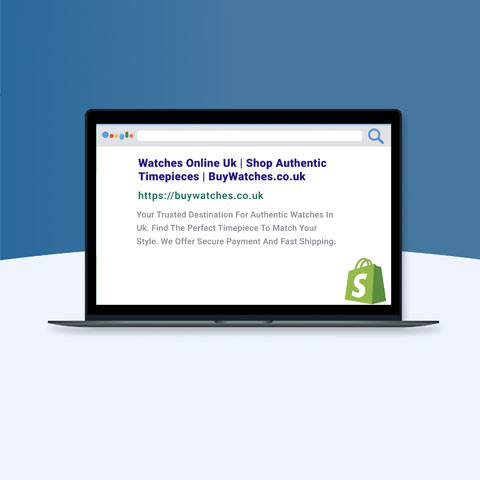What is Psychographic Segmentation in Marketing?


Psychographic segmentation involves delving into the inner lives of your target audience and using this information to better understand their desires and fulfilling their needs. Psychographic data can be invaluable when it comes to designing marketing campaigns that will truly speak to your target audience, and appeal to them on a deeper level.
What is psychographic segmentation?
It’s likely that you will already understand demographic segmentation; the method of categorising your audience based on objective attributes such as age, gender, or occupation. Psychographic segmentation takes this understanding of your audience one step further and looks to understand the more subjective aspects of your target market - such as their beliefs, values, personalities and lifestyles.
Psychographic segmentation involves gathering information that helps to explain customer motivations, not just their physical status. This often involves in-depth data collection, using methods that allow you to truly get to know your ideal customers. We will touch on how best to gather this data later on.
How does it differ from demographic information?
Demographic data alone doesn’t give enough of a well-rounded picture of your ideal buyer. Creating a marketing campaign based on demographics, but with no psychographics to provide precision and depth, is a guaranteed way to let potential leads slip through your net. Psychographic data also allows you to connect with multiple target audiences at once - because people who fall within the same demographics might not have the same psychographics.
Demographic information is easier to obtain than psychographic information because much of it is available through public data records. Demographics can also often be non-negotiable when creating your buyer personas - for example, they may need to live in a particular country or be over a certain age in order to access your product. With psychographics there is often more leeway; there’s no reason why an extrovert and an introvert won’t be able to use the same product - though it may appeal to one more than the other.
Behavioural segmentation is the tracking of the actions that your customers take, influenced by their demographic and psychographic influences, such as their spending habits and how they interact with social media.
The types of psychographic information
There are several types of psychographic information, some of which are easier to gather than others. Some psychographic information may even be traits that customers are unaware that they possess, but you are able to conclude from their buying habits or online behaviours.
Personality
Many people turn to the 5-Factor Model when looking at personality traits. This model draws on research from lots of independent studies, and some of its sources date back as early as 1936. It is the ‘most widely accepted personality theory held by psychologists today’, and where a person falls in their ‘Big 5’ is considered to be largely consistent throughout their life. Believing that people can be categorised into different points along the sliding scale of each trait, the 5-Factor Model considers:
- Openness to new experiences
- Conscientiousness
- Extroversion
- Agreeableness
- Neuroticism
Personality can play a big role in people’s buying habits. For example, someone who is extroverted will be more likely to discuss their recent purchases with a wider audience than an introverted person.
Attitudes, values and opinions
These may be influenced by or correlate with demographic information - for example, a person’s cultural background, current location, or education level.
Religious beliefs and political views fall under this category. These values are important to keep in mind when marketing your products and services, especially if you are considering aligning your goods or business to any particular beliefs. For example, if you discovered a large proportion of your customers followed a particular religion, it could be worth paying attention to marketing opportunities surrounding that religion’s major holidays.
Lifestyle and social status
Are they parents? Are they partygoers? Nightowls? Early birds? The ways in which your customers live their lives will impact how, when, why and where they spend their money. One element of marketing in particular that lifestyle will dictate is how and when people come into contact with your marketing campaigns.
For example, you might discover that a chunk of your target market are new parents who tend to be up early, and this could lead you to tailor the timing of your communications to the early morning feeders. Another example would be discovering that the majority of your target market happens to lead a very active lifestyle, and deciding to push the possibilities of your product being accessible ‘on the go’.
In terms of social status, this may dictate what type of products appeal to people. If your target market tends to earn a higher income and cares a lot about the aesthetics of their lifestyle, luxury items are more likely to get their attention.
Activities and interests
The things that people spend time doing will naturally influence their buying decisions. For example, you might realise that gardeners in particular are big fans of your cleaning product because it’s good at getting rid of grass stains - so in your next campaign, you might choose to demonstrate your product cleaning up various types of garden-related mess. Even if your product wasn’t initially designed to appeal to avid gardeners, it makes sense to acknowledge this part of your audience if it will benefit your sales.
Another example would be drawing connections between interests and using this correlation to your advantage. For example, an online travel agent might notice a large number of their users also enjoy spicy food and create content telling them where to go to get the best spicy food in the world.
How can you gather psychographic information?
Because psychographic information is made up of details that involve a person’s inner life, it can take a little more effort to gather than demographic information and is harder to organise into numerical data. Below are some examples of the best ways to get psychographic information from your buyers.
Surveys
Surveys are an easy way of gathering information as they are easily shareable, can be filled out in the buyer’s own time, and often offer specific questions and answers. Surveys are the best option if you’re looking to gather information from a large number of people.
The issue with surveys is that pre-written, multiple-choice questions can sometimes be limiting, and fail to provide a full, well-rounded view of the participants’ answers. The alternative to multiple choice questions is providing free spaces for people to go into as much detail as they need - but of course, this means that every survey response will need to be read thoroughly, and the relevant information taken from these answers (that can sometimes be broad and off-topic).
Focus groups
Focus groups involve bringing together a carefully selected sample of people to ask them questions and invite them to share ideas in a controlled setting. You have a say over the participants that are chosen to take part in the focus group, which means you can ensure they are demographically diverse.
It’s important that focus groups are well-facilitated, by someone who can encourage discussion within the group without being too leading in their questioning. You want organic ideas and opinions to come from the members of the group - not answers given in the hopes of saying what you want to hear.
Customer interviews
One-on-one customer interviews are the next step up from focus groups. In a customer interview, you can really get an understanding of a customer’s motivations and intentions for purchasing your product. It’s important to put time and effort into constructing the right questions for the information you wish to gather. You will need to decide how open-ended you want your questions to be. It will also be up to you to encourage your interviewee to elaborate on any answers you need more detail from.
While customer interviews are an invaluable source of high-quality information, they can be time-consuming and labour-intensive. They also need to be carried out by a skilled interviewer, as it’s easy for a strong-willed interviewee to lead the conversation off-course and waste your valuable time.
Online behaviour and transaction data
Observing the way in which people behave online can tell us a lot about their psychographic traits, which in turn can reveal how best to appeal to them. For example, by looking at the kind of products your ideal customers have previously bought, and how and when they purchased them, you can deduce things such as how thrifty they are, what sort of brands appeal to them, and whether they’re more likely to base decisions on prices or reviews.
You can also track online behaviour to learn more about peoples’ interests - for example, you might discover that a large proportion of your customers also tend to be fans of a particular musician or sports team, which could give you a new angle on future marketing campaigns.
How can you make use of psychographic information?
Psychographic data gathering can provide you with a huge amount of insight, and this is both its strength and one of its drawbacks. It can be a difficult task to wade through all of the information and remain focused on the information that will be useful to your marketing campaigns. Whether this means focusing on how your product or service has solved existing customer problems, or common psychographic traits in your audience you haven’t noticed before - try not to get distracted by all of the new information.
Studying the data you’ve collected may result in you making changes to your buyer personas. It’s important to be flexible when making these changes - after all, it’s more important that you create marketing materials that address who your buyers are, not who you want them to be.
See how Apteco can help you segment your audiences
Effective customer segmentation is the key to elevating your marketing campaigns and securing more leads for your business. It allows you to create content that is guaranteed to appeal to your ideal customers and ensure that their journey from lead to brand ambassador is seamless and fulfilling.
Apteco's audience building software can give you everything you need for optimum audience segmentation and is accessible via mobile devices and tablets as well as desktops. Easily analyse customer transaction history, refine your buyer personas for sharing across departments, and grease the wheels of your marketing campaigns to allow them to move quickly and easily. Because all of their software is intuitive and easily integrated alongside your existing marketing tools, you can expect minimal resistance when introducing them to your team. They play well with others!
If you’re interested in seeing what tools Apteco have to offer and how they can benefit your business, feel free to get in touch and book a demo today.
Want more like this?
Want more like this?
Insight delivered to your inbox
Keep up to date with our free email. Hand picked whitepapers and posts from our blog, as well as exclusive videos and webinar invitations keep our Users one step ahead.
By clicking 'SIGN UP', you agree to our Terms of Use and Privacy Policy


By clicking 'SIGN UP', you agree to our Terms of Use and Privacy Policy
Other content you may be interested in
Categories
Categories

Want more like this?


Want more like this?
Insight delivered to your inbox
Keep up to date with our free email. Hand picked whitepapers and posts from our blog, as well as exclusive videos and webinar invitations keep our Users one step ahead.
By clicking 'SIGN UP', you agree to our Terms of Use and Privacy Policy






![[Research] Apps: The Secret Engine of Ecommerce Growth [Research] Apps: The Secret Engine of Ecommerce Growth](https://images.bizibl.com/sites/default/files/apps-and-web-similarweb-480.jpg)


